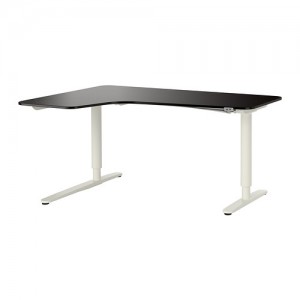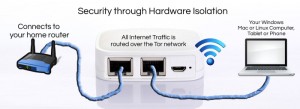 There’s a really interesting report on a recent study of broadband internet speeds that’s been released by Measurement Lab. They studied the interconnections between various ISPs, and observed performance degradation to sub-broadband speeds during times of heavy traffic. Network congestion? Nope. Interestingly, their conclusion is that the slower speeds were due to business relationships between ISPs, not network capacity. Specifically, what sort of interconnection the ISPs have with each other, what the study refers to as “interconnection-related performance degradation.” These sorts of connections are relatively short fiber-optic cables running between routers owned by each ISP but located in the same physical facility…a relatively simple and low cost connection to upgrade (add more fiber cables!).
There’s a really interesting report on a recent study of broadband internet speeds that’s been released by Measurement Lab. They studied the interconnections between various ISPs, and observed performance degradation to sub-broadband speeds during times of heavy traffic. Network congestion? Nope. Interestingly, their conclusion is that the slower speeds were due to business relationships between ISPs, not network capacity. Specifically, what sort of interconnection the ISPs have with each other, what the study refers to as “interconnection-related performance degradation.” These sorts of connections are relatively short fiber-optic cables running between routers owned by each ISP but located in the same physical facility…a relatively simple and low cost connection to upgrade (add more fiber cables!).
In researching our report, we found clear evidence that interconnection between major US access ISPs (AT&T, Comcast, CenturyLink, Time Warner Cable, and Verizon) and transit ISPs Cogent, Level 3, and potentially XO was correlated directly with degraded consumer performance throughout 2013 and into 2014 (in some cases, ongoing as of publication). Degraded performance was most pronounced during peak use hours, which points to insufficient capacity and congestion as a causal factor. Further, by noting patterns of performance degradation for access/transit ISP pairs that were synchronized across locations, we were able to conclude that in many cases degradation was not the result of major infrastructure failures at any specific point in a network, but rather connected with the business relationships between ISPs.
You can read more about this report at this link.


 IKEA has introduced a convertible sitting/standing desk called the Bekant, for around $500 (there’s actually a whole product family of desks with this name, at different prices). It has an electric motor that raises the desk for a standing position, or lowers it for sitting. I’m a huge believer in the benefits of using a standing desk at work, though even I still take sitting breaks during the day. I love the convertible desk idea and it’s great seeing this trend start to go mainstream. Watch the video below if you want to watch a desk be lowered and raised, or if you’d rather not waste that 1:14 of your life, just go buy one next time you’re at IKEA. The transition to a standing desk is not too difficult, and totally worth it (and the transition is much easier with a convertible desk like this that makes it easy to take breaks!).
IKEA has introduced a convertible sitting/standing desk called the Bekant, for around $500 (there’s actually a whole product family of desks with this name, at different prices). It has an electric motor that raises the desk for a standing position, or lowers it for sitting. I’m a huge believer in the benefits of using a standing desk at work, though even I still take sitting breaks during the day. I love the convertible desk idea and it’s great seeing this trend start to go mainstream. Watch the video below if you want to watch a desk be lowered and raised, or if you’d rather not waste that 1:14 of your life, just go buy one next time you’re at IKEA. The transition to a standing desk is not too difficult, and totally worth it (and the transition is much easier with a convertible desk like this that makes it easy to take breaks!).
 A functional hoverboard, due to ship in 2015, has all the makings of a hoax (remember Back to the Future?). Except…I’ve been digging…and this appears to be genuine. The exact technical details aren’t clear…but from what I can gather, both from the official page and from comments on Kickstarter, it uses a rapidly changing (rotating?) magnetic field that creates
A functional hoverboard, due to ship in 2015, has all the makings of a hoax (remember Back to the Future?). Except…I’ve been digging…and this appears to be genuine. The exact technical details aren’t clear…but from what I can gather, both from the official page and from comments on Kickstarter, it uses a rapidly changing (rotating?) magnetic field that creates 

 The
The